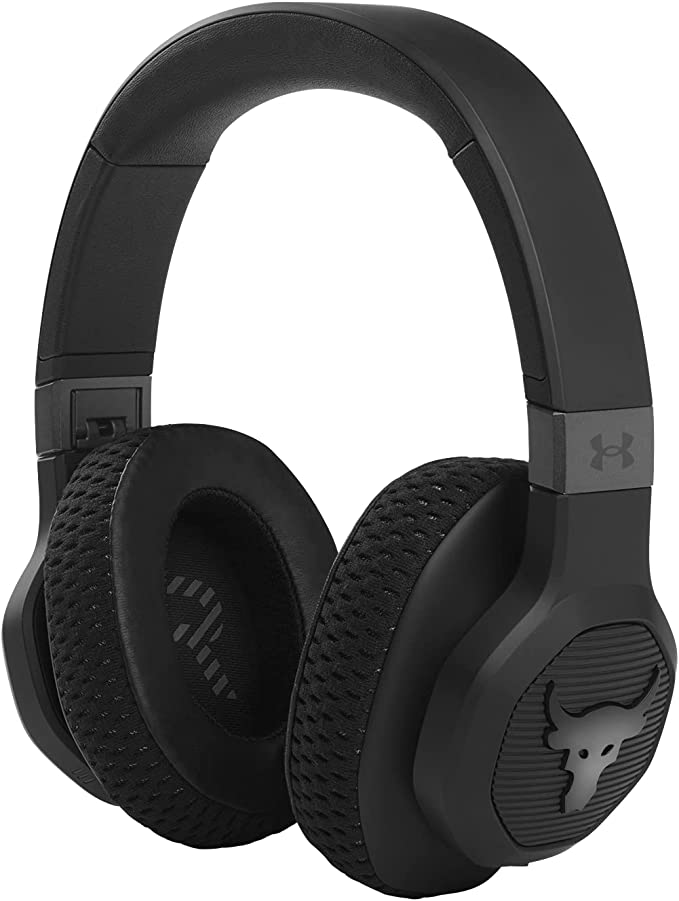Armor for Your Ears: The Engineering of Ruggedized Audio for Heavy Lifting
Update on Nov. 23, 2025, 7:35 a.m.
In the hierarchy of gym equipment, headphones have transitioned from accessory to essential. Yet, the vast majority of “sport” audio gear is designed for the runner or the casual elliptical user—lightweight, minimal, and often fragile. For the strength athlete, the powerlifter, or the high-intensity interval trainee, these delicate devices often fail. They slip during a bench press, short-circuit from profuse sweat, or simply lack the sonic weight to match a heavy deadlift.
The JBL Under Armour Sport Wireless (Project Rock Edition) represents a different philosophy: Ruggedized Audio. By analyzing its construction—specifically its grip mechanics, moisture management materials, and acoustic tuning—we can understand how engineering adapts to the hostile environment of the “Iron Paradise.”

The Mechanics of Grip: Defying Gravity
The fundamental flaw of using traditional over-ear headphones for exercise is kinetic instability. During a set of burpees or a decline bench press, gravity and momentum conspire to pull the headphones off the head. Standard plush headbands effectively become lubricated slides when sweat is introduced.
This device addresses this through UA Storm Super Grip technology. From a materials science perspective, this involves replacing standard leatherette or smooth plastic contact points with high-friction, textured polymers. * Coefficient of Friction: By increasing the friction at the headband-to-skull interface, the device resists lateral shear forces. * Clamping Force: The engineering challenge is balancing this grip with comfort. The goal is a secure hold that doesn’t induce tension headaches, creating a “mechanical lock” that relies on texture rather than excessive pressure.
Hygiene Engineering: The Problem with Sweat
Sweat is not merely water; it is a saline solution containing electrolytes, oils, and proteins. Over time, this creates two problems for headphones: chemical corrosion of electronics and bacterial growth in cushioning.
The solution implemented here is the Washable Supervent Ear Cushion.
1. Breathability: Unlike sealed leather which traps heat, the “Supervent” fabric structure promotes airflow, utilizing the Venturi effect to wick moisture away from the skin and electronics.
2. Modularity: The ability to remove and hand-wash the ear cushions is a critical sanitary feature. It prevents the “gym bag smell” caused by bacterial proliferation in porous foam, extending the lifespan of the soft components that usually degrade first.
3. IPX4 Rating: The internal electronics are sealed to an IPX4 standard, ensuring that while the pads may get wet, the drivers and battery are shielded from splashing water and sweat ingress from any direction.
Psychoacoustics: Tuning for Adrenaline
Sound is not just data; it is a stimulant. The JBL Charged Sound profile is not designed for critical listening in a quiet room; it is tuned for a noisy, high-adrenaline environment.
- Bass Emphasis: Low-frequency sounds (bass) are physically felt as much as heard. In a workout context, a boosted low-end response (typically 60-200Hz) can entrain the listener’s heart rate and movement rhythm. This “rhythmic drive” is a psychoacoustic tool that can arguably reduce the perception of effort (RPE).
- Volume Headroom: Gyms are loud. The drivers are engineered to deliver distortion-free audio at higher volumes, allowing the user to mask external clanking without the audio signal breaking up into harsh noise.
Situational Awareness: DSP as a Safety Tool
Isolation is great for focus, but dangerous for situational awareness. The headset employs Bionic Hearing, a Digital Signal Processing (DSP) feature that splits into two modes: * TalkThru: This mode drastically attenuates the music volume and activates speech-frequency microphones. It allows for conversation without removing the headset—a massive workflow improvement when asking to “work in” a set. * Ambient Aware: This mode mixes environmental sounds (like alarms or shouting) into the music feed at a lower volume. It maintains the rhythm while restoring spatial awareness, crucial for safety in busy environments.
Conclusion: Specialized Gear for Specialized Tasks
The JBL Under Armour Sport Wireless is not a generalist device. Its bulk and grip might be excessive for a commute, and its bass-forward tuning might offend a purist. However, as a piece of training equipment, it succeeds by solving specific engineering failures of standard headphones. By treating sweat as a corrosive threat to be managed and stability as a mechanical necessity, it offers a robust solution for those who treat their workout as a discipline rather than a hobby.





























